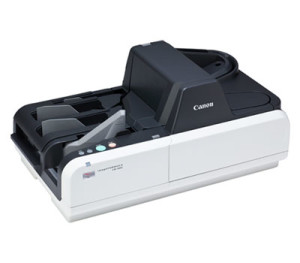
Today’s stiff economic headwinds have made cash management more important than ever.
Among these headwinds is the recent spike in economic volatility to a five-year high, as determined by Goldman Sachs’ U.S. Financial Conditions Index, which tracks changes in interest rates, credit spreads, equity prices, and the value of the dollar. In particular, the strong value of the U.S. dollar has weighed on exports and the financial performance of businesses with an international presence. Complicating matters is fluctuating oil prices and uncertainty resulting from the so-called Brexit.
The stakes have never been higher for businesses: 50 percent of Fortune 500 companies have been acquired, gone bankrupt, or ceased to exist since 2000, according to Forbes magazine.
In an environment of increasing economic uncertainty, The Hackett Group reports that businesses are striving to improve agility and find new ways to innovate. In response, businesses are requiring that their finance departments in general, and their accounts receivable departments, in particular, migrate from a tactical to a strategic function. Business leaders want the finance department to provide more effective cash management for investment and acquisitions. Seventy-five percent of finance executives report that their highest priority is supporting the execution of the business’ strategy, according to The Hackett Group.
Unfortunately, critical accounts receivable tasks, such as cash application, remain a largely manual, paper-based affair. PwC’s financial benchmark data, based on over 400 global client engagements, finds that inadequate systems and processes result in 20 percent of time spent on accounts receivable activities that could be automated. It is no wonder that nearly two-thirds of billers surveyed by Aite Group are dissatisfied with their receivables processes. Their beef is the diversifying mix of payment channels, the lack of standards for remittance data, lots of unauthorized deductions, and payments and remittance documents that arrive separately.
Finance executives surveyed by the Institute of Finance and Management (IOFM) in 2014 ranked accounts receivable as their second-most time-consuming and inefficient finance and administration function, behind similarly paper-intensive payables. The finance executives also named accounts receivable as the second-most manual and labor-intensive finance and administration function.
It is for these reasons that 41 percent of senior finance executives surveyed by IOFM say that improving accounts receivable is a top priority, and 37 percent of these executives are dedicating more capital to receivables automation. Fifty-six percent of finance executives believe that improved technology would make financial processes more effective, according to PwC’s financial benchmarking data. Thirty-three percent of those surveyed believe that redesigned workflows will make financial processes more effective.
Organizations can eliminate inefficiencies in their financial operations – while gaining much-needed visibility into their cash – with an integrated receivables solution. An integrated receivables solution performs five critical functions that make cash application more effective and efficient:
- Aggregation of all payments: Fifty-four percent of large corporations cite inconsistent payments handling due to multiple payment types as an issue negatively impacting receivables processing, Aite Group finds. With an integrated receivables solution, all paper and electronic payment streams are consolidated into a single workflow.
- Digital workflows: Fifty-six percent of large corporations surveyed by Aite Group identify the large number of channels through which payments are received as a factor negatively impacting their receivables processing. Manual processes make it nearly impossible to normalize the workflows for these various channels. Integrated receivables solutions provide dynamic workload balancing that allows managers to assign resources intelligently based on the nature and volume of the transaction or exception.
- Visibility into all receivables processes: Heightened demand for timely financial information is coming from accounting (for accounts payable, accounts receivable, budgeting and forecasting), collections, credit, procurement (for spend management and contract compliance), sales and inventory. Integrated receivables solutions offer real-time visibility, tracking and control across accounts receivables processes, from any personal computer, laptop or mobile device. User-configurable business rules and criteria accelerate workflows while ensuring proper handling of receivables.
- Exceptions handling: Seventy-four percent of large corporations cite a large or growing number of exceptions and returns as negatively impacting their receivables processing, while 73 percent of large corporations identify incomplete or inaccurate data about receivables as an issue, according to Aite Group. With an integrated receivables solution, all exceptions items are consolidated onto the platform and sent to individual work queues based on pre-defined rules.
- Working capital management: While 80 percent of billers require payment on credit sales within 30 days, average Day’s Sales Outstanding (DSO) stands at 50 days, according to research from CEB TowerGroup. DSO is a key metric in determining a corporation’s effectiveness in collecting receivables. Clearly, high DSO is putting a strain on Corporate America’s cash flow. Integrated receivables solutions improve DSO by accelerating cycle times through workflow automation and streamlined exceptions handling. What’s more, real-time dashboards provide management with visibility into the current day’s accounts receivables activity, empowering better-informed working capital decisions.
These are some of the reasons that 39 percent of senior finance executives surveyed by CFO Research identified improved business process execution as the most important benefit of improving financial operations, while 31 percent of those surveyed cited lower costs as the top benefit of operational improvements.
Moreover, automating cash application with an integrated receivables solution makes businesses more competitive, regardless of the economic environment. As a percentage of revenue, top quartile finance functions run at 40 percent lower cost than their median peers and spend 20 percent more time on analysis to achieve improved insight into leading market indicators, PwC reports.
Strong economic headwinds have the potential to blow businesses off course. Manual, paper-based cash application processes will not help businesses navigate these uncertain waters. The answer is automating cash application with an integrated receivables solution, to improve operational efficiency and enhance working capital management.









